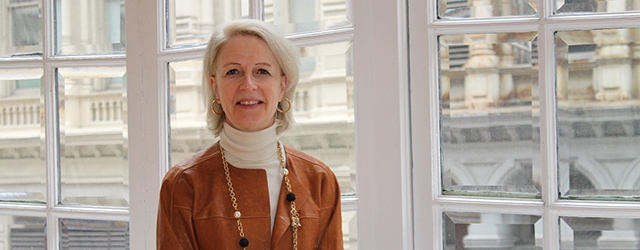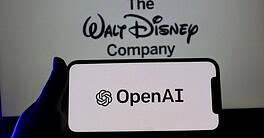Maria Gotsch, president and CEO of the Partnership Fund for New York City, visited Global Finance to discuss the Fund and how its FinTech Innovation Lab is designed to promote innovations that yield useful benefits.

Global Finance (GF): How does the Partnership Fund for NYC work?
Maria Gotsch: Our investors are corporations and the private-equity community. With additional funding through a state tax-credit program, our total capital raised is about $130 million, and we’ve invested about $170 million.
We expand opportunity through community development. We also invest in large public/private initiatives, taking a venture-capital approach. We catalyze growth through equity investments to support new sectors—including fintech, life sciences, and transit technology—where we think our money and corporate relationships can be a strategic help.
GF: Why did you start the FinTech Innovation Lab?
Gotsch: Coming out of the 2008 financial crisis, the head of Accenture’s New York office mentioned they were getting interest from their banking clients in new technology, and they weren’t seeing much in New York. That always gets our attention. So we proposed a 12-week program with corporations explicitly to grow fintech in New York City.
GF: What corporations participate in the lab?
Gotsch: We have 44 financial institutions—a mixture of banks, insurance companies, money management firms, hedge funds and payment companies. Our value in this lab is the access to the customer. Senior bank executives identify innovation that is interesting and relevant to them, and then they help ensure they can actually use that innovation. There is a difference between innovation, and innovation that can be used in a large, regulated entity.
GF: What types of companies apply to the program?
Gotsch: A company whose product is already created and that has typically raised seed funding, sometimes Series A and B. They have some early customer traction and pilots, but a few things have not worked out. In the program, products are often refined for a different target audience than initially contemplated by the entrepreneur or functionality is added so the company can solve a bigger problem.
GF: How do you select participants?
Gotsch: We do a worldwide call for technology. Then our 44 sponsoring financial institutions review the applications, listen to oral pitches and watch product demos. Startups get into the program because a critical mass of those financial institutions have a very high interest and are prepared to spend time mentoring them.
GF: How does the lab work for the fintech companies?
Gotsch: The program runs April-June, and each financial institution works with one or two companies, while each of the companies has five or six mentors. How companies talk about their product at the beginning is often very different than how they talk about it at the end—because they’ve had the benefit of this input. Companies also have access to a group of entrepreneur mentors with office hours, and a weekly series of panel discussions around topics of particular interest to entrepreneurs.
GF: Where are the graduates of the program now?
Gotsch: Of the 58 companies that have gone through the program, five have been acquired—the largest publicly announced acquisition was Inktank, bought by Red Hat for about $175 million. Of the remaining 53 companies, 92% are still in business. Post-program, they’ve raised over $800 million and created about 1,000 jobs.



